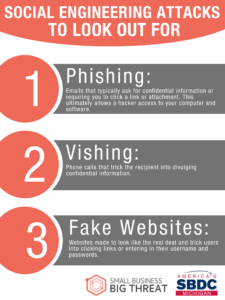Twitter Suffers Major Social Engineering Attack
On July 15, 2020, Twitter suffered a major social engineering attack that impacted over 100 high profile accounts, including Joe Biden, Barack Obama, Elon Musk, Bill Gates, and Jeff Bezos. Twitter has suggested this was a social engineering attack that targeted Twitter employees.
What is Social Engineering?
According to Webroot, a cyber-resilience company, “Social engineering is the art of manipulating people so they give up confidential information.” The type of information targeted by social engineers can be anything from usernames and passwords, to credit and debit card numbers or other banking information, or intellectual property. Social engineering attacks can even attempt to access a computer to install malware.
The Different Social Engineering Attack Types
Social engineering attacks are not always easy to detect because they have many different forms. Some of the most common social engineering attack types are:

1. Phishing
Emails that typically ask for confidential information or requiring you to click a link or attachment. This ultimately allows a hacker access to your computer and software.
2. Vishing
Phone calls that trick recipients into divulging confidential information.
3. Fake Websites
Websites made to look like the real deal and trick users into clicking links or entering in their username and passwords.
How to Prevent Social Engineering
Since social engineering attacks try to trick or coerce people into giving confidential information, it is important to verify who you are speaking with or corresponding with prior to divulging any information to them. The following are tips on how to prevent social engineering!
1. Verify who you are speaking with prior to divulging information.
Take precautions and verify who it is that you are in contact with. You can do this by looking them up on LinkedIn, looking them up on their company’s website, or looking them up with another directory.
2. Think before you click.
If you were not expecting the message, verify it is legitimate before opening and interacting with it.
3. Keep your anti-virus software up-to-date.
This action can help prevent malware from installing on your devices – if you end up clicking on that malicious email
Subscribe to our monthly, email newsletter to stay up-to-date on the latest in cybersecurity!